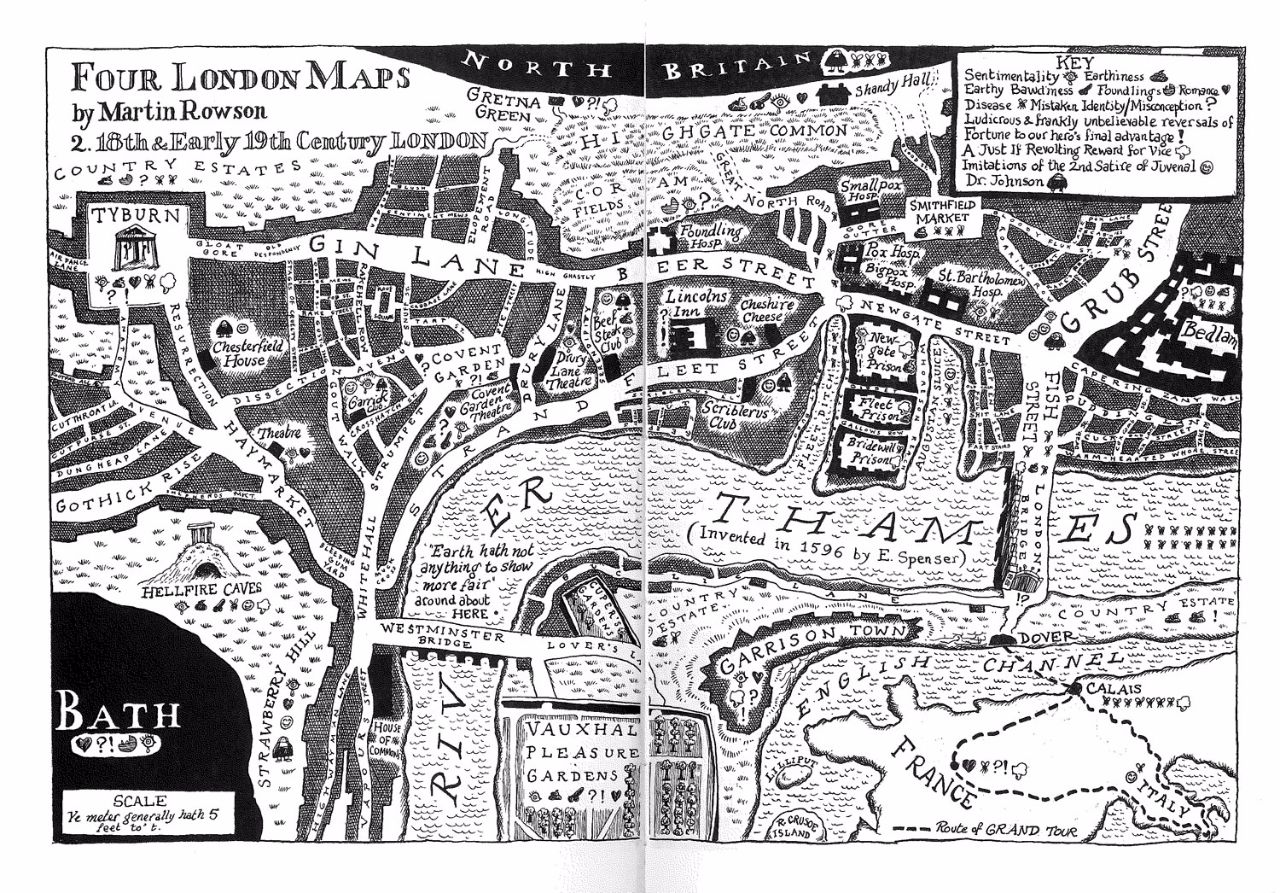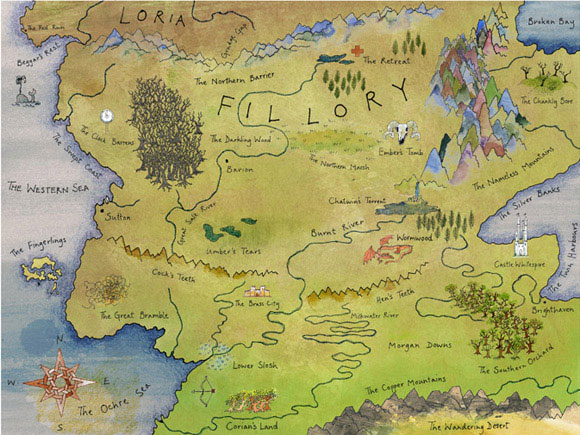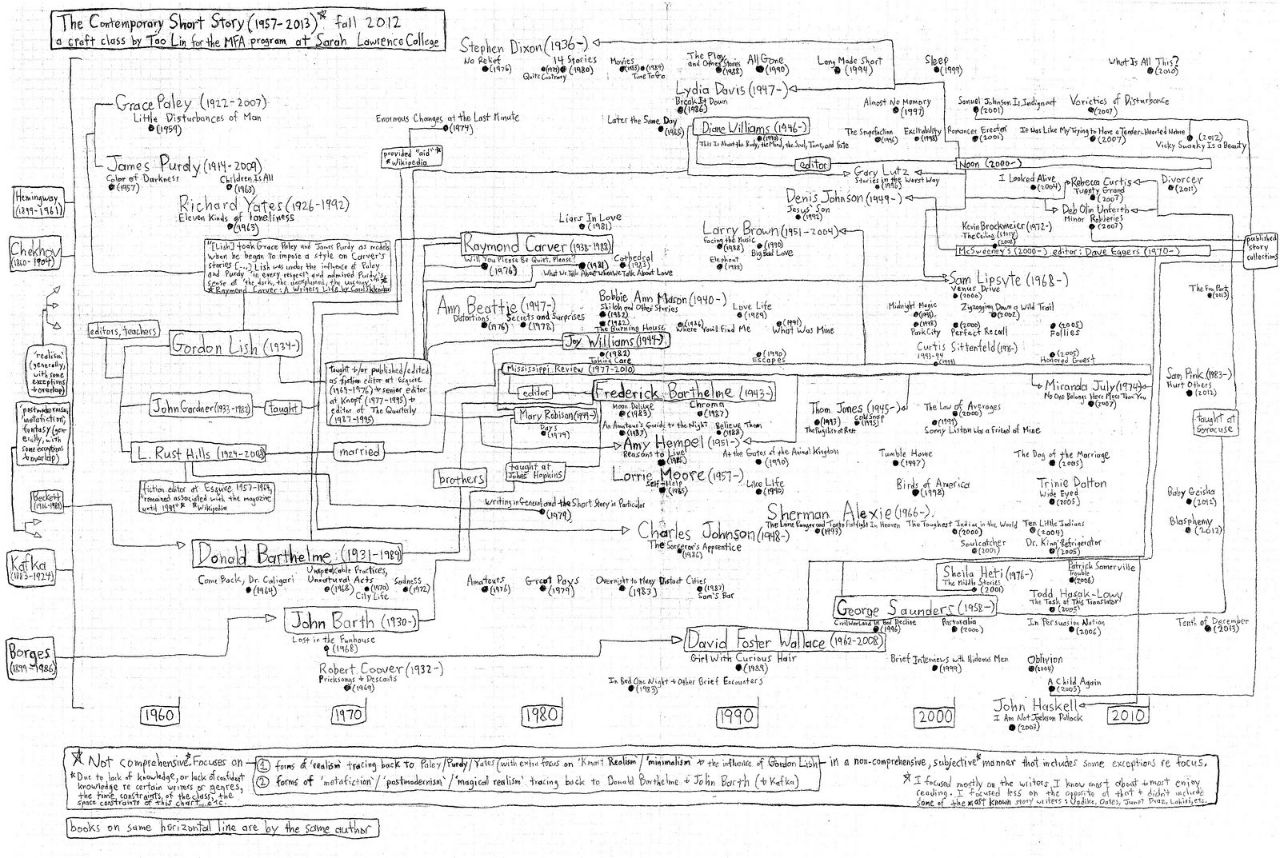- In 1999, one of Granta’s themes was the city of London, the magazine’s home to this day. The issue featured four ‘literary’ maps of the city produced by graphic illustrator Martin Rowson, which span various periods of London’s history. The first, set in the fourteenth century is an ‘Impenetrable Forest’ dissected by a single road to Canterbury. The final map plots the poetry, alcoholism, cheap journalism and Booker Prizes of Hampstead’s 90s literary set. Who can you spot? · Granta

- In ‘The Allure of the Map’ Casey N. Cep explores why writers are so drawn to cartography. ‘No map can be a perfect representation of reality; every map is an interpretation, which may be why writers are so drawn to them,’ she writes, citing Robert Louis Stevenson, J.R.R. Tolkien, Lewis Carroll, Ursula K. Le Guin and Game of Thrones · New Yorker

- Tao Lin drew his students a map of the contemporary short story for his MFA class at Sarah Lawrence. The sketch is a mess of names, stories, editors and magazines, beginning with Kafka and Chekhov and leading up to modern lit mags like Noon and McSweeney’s. In his annotations, Lin, admits ‘I focused mostly on the writers I know most about + most enjoy reading. I focused less on the opposite of that’ · www.taolin.info

- One of our favourite issues of Diagram magazine features maps and schematics of all kinds, from the migration curves of amoebae to the flight patterns of Canadian geese, it’s a big eclectic mash-up. One diagram from Medical Arts journal warns that in the rush to incubate a patient, ‘Don’t gouge the eyes’. After all, ‘the orbital ridge is a convenient place to grab and pull’ · Diagram

- If you could design a map of your life, what would it look like? Visual Editions asked sixteen artists, writers and thinkers to use maps as their mode for storytelling. Available in both hard copy and in an online interactive environment, the project brings together Olafur Eliasson’s colourful visions of time, the painted typographies of the Leanne Shapton’s desk and Joe Dunthorne’s literary influences and anxieties. Each forms, in the words of Michel de Certeau, ‘a manifold story . . . shaped out of fragments of trajectories and alterations of spaces’ · Visual Editions






